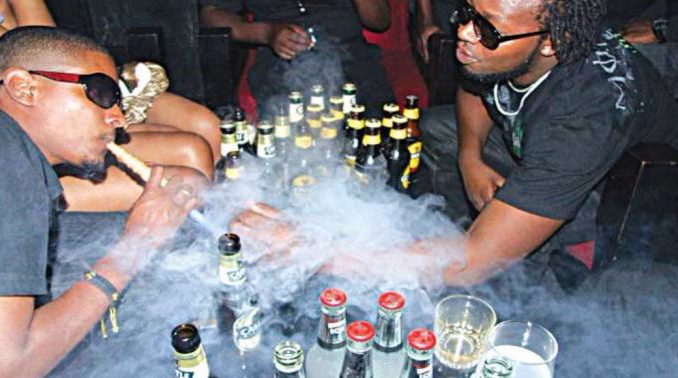
By all standards, it is an incontestable fact in recent times that drug abuse in Nige-ria is on the upward swing and more prevalent across almost all strata of the society. From the East to West, North to South, amazing re-ports of drugs and other sub-stance abuse fall among some social and legal issues causing great concern. But even more foreboding was the Federal Government’s disclosure that an estimated 14.3 million adults in Nigeria use hard drugs for non-medical purposes within the last one year.
Minister of State for Health, Dr. Osagie Ehanire, while unveiling the report of the first National Survey on Drug Use and Health to be con-ducted in Nigeria, said some of the findings were striking and alarming. According to him, data collected from 38,850 respondents in the household and 9,344 high risk drug users nationwide suggests that the prevalence of past year’s drug use in Nigeria is more than twice the global average of 5.6 per cent.
He said: “In Nigeria, canna-bis is the most commonly used drug. An estimated 10.6 mil-lion people had used cannabis in the past year. The average age of initiation of cannabis use among the general popula-tion is 19 years. One in seven persons aged 15 – 64 years had used a drug other than tobacco and alcohol in the past year.”
The disclosure evidently formed the basis of increasing level of violence and crimi-nality among youths and cult groups around the country as a result of drug and substance abuse among the younger generation. The report grouped youths within 19 years of age as mostly affected.
It is in this context that the recent cult clashes in Shomolu, Surulere, Ikorodu in Lagos State wherein hundreds of suspects were herded into police detention and prison custody, as well as deadly drug-induced cult-related attacks in Rivers State are some startling evi-dence of these.
In the southern and northern parts of the country, there is also a considerable level of non-medical use of prescription opioids such as tramadol and cough syrup containing codeine and dextromethorphan, with unprecedented health hazards, which, in turn, culminated in the increase in the number of inmates in lunatic asylums.
If the prevalence is disturb-ing, it is even more disheart-ening to know that the report identified people who inject drugs (PWIDs) also constituted a sizeable proportion of high risk drug users, even as phar-maceutical opioids, cocaine and heroin in that order were the commonly injected drugs.
The fact that the report stated that among every four drug us-ers in Nigeria, one is a woman that one in five persons who had used a hard drug in the past year suffered from drug user disorders attests to the fact that there is need for concerted efforts to mitigate the negative consequences of the increasing use of psychoac-tive substances on the health and security of the nation.
But the probing question is: What is the source of these con-trolled drugs and substance? Given the fact that cocaine and heroin are not grown in Nigeria, how effec-tive are the border control measures? What level of implementation has Nigeria given to the various strategies enunciated by the International Narcotic Control Board (INCB)? To what extent have operatives of the National Drug Law Enforcement Agency (NDLEA) implemented the National Drug Control Master plan, which addressed the issue through four broad subheads – Licit and Illicit Drugs, Drug Demand Re-duction and Adequacy of Penal Sanction.
It is pertinent to note that no nation of consequence will ignore the salient provision of this plan. Beyond arresting and prosecution of drug barons, traffickers and users, of great importance is the role of education on the dangers of drug and substance abuse, through the media as well as anti-drug clubs in schools. If such preventive measures are critical to the success, treatment, rehabilitation and social reintegration for drug use disorders are essential components of drug demand reduction. While these measures last, it is vital Nigeria ensures peri-odic highlevel review of the implementation of the plans in consonance with contempo-rary realities.
Like the INCB suggested in one of its annual reports, all member states should make Political Decla-ration and Plan of Action on International Cooperation towards an integrated and bal-anced strategy to counter the World Drug Problem.
Given the fact that research-es have shown that prepon-derance of drug abusers are among youths and teenagers, it has become indispensable to redesign efforts and strategies to redirect their perception in order to regain this generation of youths and refocus their minds on productive and beneficial activities.
An adjunct to this is the need to integrate primary, secondary and tertiary institu-tions, community development associations and social clubs into drug control stakehold-ers, utilising these for effec-tive educational programmes, while the National Orientation Agency (NOA), health and justice ministries and the NDLEA as well as the police strengthen their convergent and divergent efforts to arrest this alarm-ing level of drug abuse in the country.
END

Be the first to comment